Bambi's bones
Wednesday morning as my daughter and I drove to school we saw a black dog loping along the main road near our home. A big intact male, its coat the color of carbon, with the long legs of a hound and the jawline of a pit fighter. A free dog, without collar. Walking slowly, almost lackadaisically, the same way the urban coyotes often are if you encounter them at the end of a long night’s prowl. One of those specters of the invisible city not really meant for you to see.
It was only when I looked back at the pictures I had taken on my phone that I realized how apocalyptic the vignette was. The dog was walking between the tax-foreclosed apartments that were taken over right before Covid by squatters living on generator power and bottled water, and the last little house on an industrial block, occupied by a mysterious old lady who seems to emerge once or twice a year to patrol the hurricane fence maze that shields her paved lawn. Between her place and the warehouse next door, the ornamental plants had been allowed to get their jungle on, along with a young invasive Chinaberry and a lone Italian cypress, one of those trees I always associate with the Isle of the Dead. The sky was muddled, criss-crossed with power lines and telecom cables. In the background you could see the old tower of KNOW, Austin’s first radio station, built in 1922, no longer transmitting but maintaining a zone of green within its terrestrial bounds.
It was a few degrees short of a hundred when I took my next break at mid-day and decided to go for a run despite the heat. An urban trail run that sought out the shade, following the bulldozer paths under the new onramp down to the old jeep roads that traverse the woods beneath the bridge. The young deer whose spotted fur I had seen a couple weeks earlier was gone to bones now, mostly desiccated there a few steps from the exit lane that had killed it.
It made me think about the challenges our automotive habitat provides for young animals to try to survive into adulthood and their own reproductive years, and whether the coming generation of self-driving robot cars will improve the situation. Later in the day, the memory got me thinking about what challenges the planet we have made presents for the survival of our own young.
The night before my wife and I watched a German-language news feed about the triple-digit weather across Europe, getting ready for our own late summer trip to the continent. Scenes of intercity trains stuck in fields of fire and giant crowds of exhausted humans shambling around cities whose builders never imagined there would be a need for air-conditioning that far north. A few minutes of that, even across the gap of information lost in translation, was enough to get us talking over dinner about the future our daughter faces. We can all feel it—that the long-forecast overheating of the planet is really happening now, and basically nothing is changing. Except in those pockets where you can see how people live after the infrastructure fails, and you get the feeling the economic system isn’t far behind. What happens when they run out of fuel for the generators, or processed water?
Thursday I listened to the latest podcast from Alex Steffen of The Snap Forward, in which that tireless climate sage incisively riffs on the extent to which the world has become uninsurable. In Louisiana this year, the property and casualty insurance market is collapsing, with companies failing in the aftermath of Hurricane Ida and others leaving the state as they look at what La Niña is likely to bring as hurricane season settles in this year. That means cancelled policies for homeowners, left to hope that the state will step in as re-insurer. You wonder what happens when that virus spreads, to Houston or Miami or half of California. And when the public fisc runs out of borrowing capacity in a world of diminishing futures.
I spent last weekend with a documentary film crew working on a project about works of contemporary science fiction that explore promising ideas for better futures, and ways in which kernels of those seemingly fantastical visions are already being introduced into the real world by present-day activists and scientists. One of the books they are featuring is my 2020 novel Failed State, which features a post-revolutionary truth and reconciliation tribunal seeking reparations for the destruction of the American wilderness and violations of the rights of nature. The trio of director, camera operator and sound recordist came down from Vancouver, after a few days in Santa Barbara with a brilliant colleague of mine. Traveling, basically, from summer in utopia to a long weekend in dystopia.
We spent Friday in the air-conditioned comfort of a university library, talking about futuristic permutations of law and justice under a ceiling painted with the surprisingly weird iconography of the history of Texas. Saturday they wanted to document what it’s like to walk through the world of these Field Notes. So we set out to explore a representative patch of feral city here at the edge of town. And as the schedule worked out, we did so at 4 o’clock in the afternoon, the hottest part of a triple-digit day.
The zone we roamed is quintessential American edgeland: a former aggregate mine in the floodplain of the river that was ecologically abused for decades by its former industrial owners and then sold back to the public when it had no more to give. If you look it up on the map the label would have you believe it is a park. While that may be true in the future, when the city figures out how to domesticate it, for now it’s what my friend Bruce Sterling used to call an “involuntary park.” Sixty-some acres of quasi-brownfield undergoing an unmanaged rewilding.
In spring it’s often beautiful, full of native flowers that come up amid the concrete ballasts that demarcate the field in enigmatic patterns and turn it into an accidental Chinati. In the peak of a drought-ridden summer, the romance is a little more elusive. But you can still see the signs of life, in the deep-rooted trees that keep their green all through the dry season, the prickly pear that will outlast us all, and the old man’s beard that blooms its hairy white petals between the concrete left-behinds.
We bushwhacked our way in at the beginning, seeking the most photogenic sites that I knew were back in there. They were an intrepid group, fearlessly tromping in shorts through brush in which half the plants have thorns, and I felt like a bad guide when it took me a while to find the spot I was looking for, confounded by the altered landscape of a site I normally explore in cooler seasons. We pushed our way through young retama and old piles of trash, watched over by high-flying vultures, and eventually came upon the switching station that controlled the plant.
When I first visited that spot, it was recently abandoned and barely discovered. It’s more beat-up now, covered in a palimpsest of graffiti, and yet oddly welcoming, with a motley collection of furniture other visitors have pulled in from the archipelago of dump sites in the surrounding fields. Scavengers have stripped all the copper out of the breaker boxes, and the interior walls have been remade into extravagant and often scary spray-paint murals, but you can still find traces of what once went on there. On this trip I found a cloth-bound daily diary, its water-damaged pages still legible in their patient chronicle, with hand-written entries that read like invisible corporate verse.
MONDAY 26 FEBRUARY
2001 57th day — 308 days follow
COOL ALL DAY
MAINTENANCE CREW STARTED AT 500 A
WEEKLY SAFETY MEETING AT 630A
STARTED THE PLANT AT 700 A
9 TELSMITH CRUSHER FILLED WITH MATERIAL
2 #1 SCRUBBER DRIVE BOLTS SMOKING
2 TOO START #1 SCRUBBER
1 WASH ROCK OUT OF #1 SCRUBBER
1 CLEAN OF MAGNET ON #9 CONVEYOR
1 PLANT FEED CONVEYOR SKIRT RUBBER
STOPPED THE PLANT AT 530 P
I was excited enough at this frankly unexceptional discovery to read from it aloud, through a science fictional prism, the way one should read a diary found in the ruins of a dying civilization—a diary from the year that I was raised to think of as the beginning of the future. I remarked to my new friends about how I could remember calculating with my childhood friends how old we would be in the year of Kubrick’s interplanetary masterpiece, and wondering if we would be able to take corporate passenger rockets to meetings on the Moon. But then I could see that the heat of the 21st century we actually made had begun to take its toll on the visiting Canadians, and we needed to make our way to the sanctuary of the water.
After a pause for rest and hydration, we found a dusty old road that led us out of the zone. Some of the graffiti had been left by a tagger named Sig. That’s also the name of the protagonist of my first novel, a young drifter who gets deported from his Canadian sanctuary back to find his way through the overheated American heartland that people call the Tropic of Kansas. As we walked, and wondered if it could have been him, we found a flat screen TV sitting in the middle of a big clearing, surrounded by infant car seats and metal objects like the shrine of some cable TV cargo cult. When we made our way around to the front of the screen, we saw it was riddled with bullet holes. The screen seemed to contain the bullets weirdly well, Videodrome style. I picked up a big stainless steel vat cover and threw it across the field, which got us imagining a post-apocalyptic game of Ultimate Frisbee—catch the disc wrong and you might lose a few fingers.
On our way back to the vehicles, we walked the dusty truck road that parallels the highway, in the absolute peak of the heat. We followed the tracks of a pickup, in which were the tracks of coyotes, deer, a fox, and maybe a wild dog. Then we loaded up and headed downriver to take in the vista of a different face of the 21st century: the gargantuan new Tesla Gigafactory, which we wanted to try to see from the river.
We drove around first, looking for river access near the plant, but all we could find were guarded checkpoints around that corporate colony of the future. So we drove back upriver and put in under the old highway by Hornsby Bend. The Canadians were in the water before the canoes, wisely so, joining the smiling families and kids taking advantage of a rare and well-shaded slice of the commons.
The paddle down was easy and beautiful, a lush urban corridor flush with night herons, egrets and overflying jets. As Canadians, my companions were all experienced canoeists. We couldn’t see the factory from the river when we got there, as the foliage had thickened over the summer since my last visit there in spring. And when it was time to paddle back, we realized the current was stronger than we had anticipated. I had to walk the boat in waist-deep water for the first stretch, pulling the camera operator and her expensive gear. The director and sound recordist found an easier channel, and we worked our way into the sunset.
We lost the light fast. I hadn’t looked at my watch in a while, and when I did, it was after 9. An unexpected gift: as the light bled out, the river came more authentically alive. Green herons, frogs, fish jumping everywhere you looked. A bat, and then another. And then nighthawks, in big groups like swallows, flying lower than I’ve ever seen, buzzing airborne food from a few feet above the water grasses along the south bank. Intense biodiverse energy one rarely experiences in the city. It made you realize where the life goes when the long summer sun never lets up until its gone.
It was pitch black when we got to our take-out. But we could hear music echoing off the underside of the highway bridge. And then, as we got closer we could see light–red and green strobes turning the unimproved right of way under the highway into an improvised disco. There was recorded music playing through a big portable amp, but it was being outcompeted by a chorus of what must have been twenty kids in the water, belting out “De Colores” at the top of their lungs.
A guide at the Maroon Bells once told me the North American beaver only became nocturnal when the French trappers showed up. I don’t know if that’s true, but it’s believable. I thought about it in the days after we got off the water, wondering if our species might have to undergo a similar adaption. The difference between us and the beavers is we made the daylight unsafe for ourselves.
We had spent the week before in a hospital in Des Moines, attending to my ailing dad. When we got him discharged after a few long days, we returned to the place where my folks have retired, an oak savanna they have been restoring with annual controlled burns since the 1980s. After lunch, my 82-year-old mom took her 3-year-old granddaughter for her first proper forage. The covering up was intense, up there in that tick-ridden country, but worth it. We didn’t walk more than a hundred yards from the garage before we started finding bountiful chanterelles, which we ate with our supper that evening. It got me thinking how better off we would be if we paid more attention to Grandma knowledge instead of the kind that gets all the airtime. Maybe it’s not too late to work on that, even if it’s too late to evade the heat that seems ready to start the culling.
Extra credit
Speaking of beavers, check out this excellent piece at Vox on the cooling ecological role they play.
The documentary auteur I am so fortunate to be working with is Brett Gaylor, a documentarian whose work you can find here at the website of his production company, Imposter Media. I’ll share more about the project(s) we are working on when he has gone public with it.
If you’re looking for a summer read, the editors of Texas Monthly have a pretty awesome flow chart of their favorite Texas novels in the August issue, one dark branch of which ends with my 2019 book Rule of Capture.
Thanks to Gil Roth at the Virtual Memories Show for this story about how England has doubled the amount of forestland in the past 150 years, and now has as much land dedicated to forests as the year 1350.
Hungry? BBC has an excellent piece by Pascal Kwesiga on why he prefers the bountiful grasshoppers of summer fields to beef.
If you’re in Austin, be sure to check out the new mural on Bolm Road here in Govalle, honoring the neighborhood environmental heroes—including many I have had the honor to work with—with paintings on the fence that surrounds the brownfield of the old tank farm.
Field Notes will be in the field next Sunday. Stay cool and we’ll be back in August.


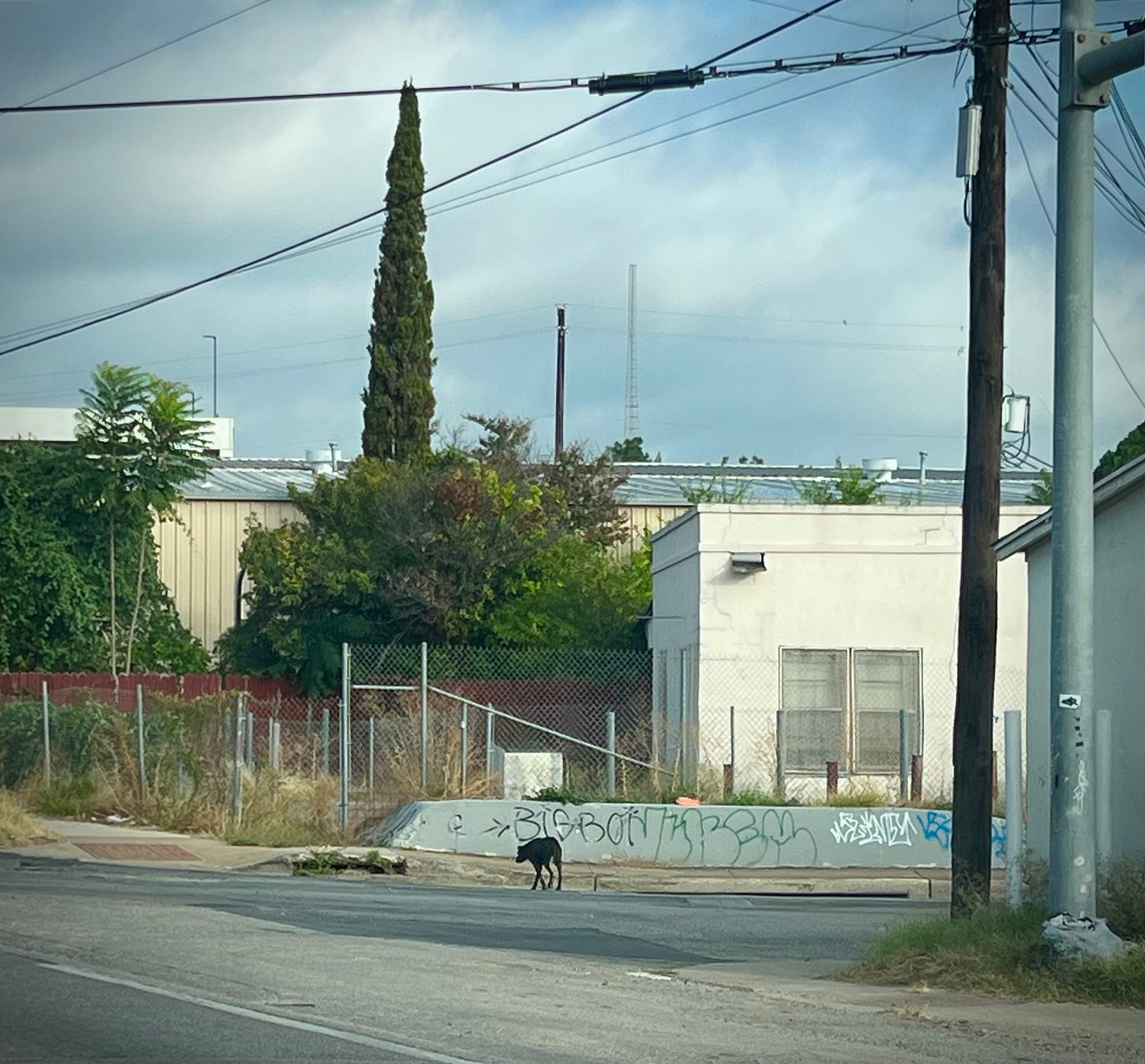
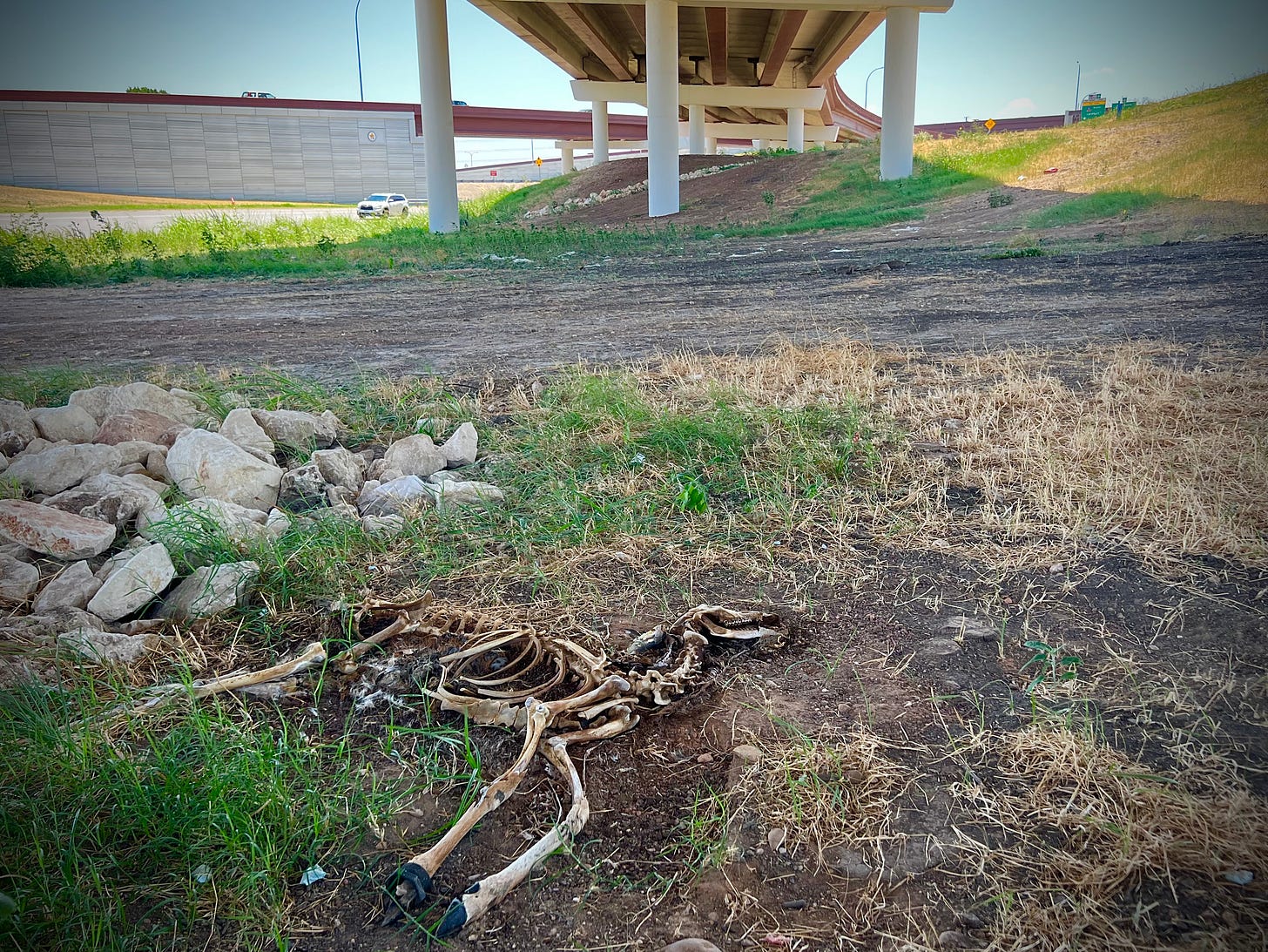

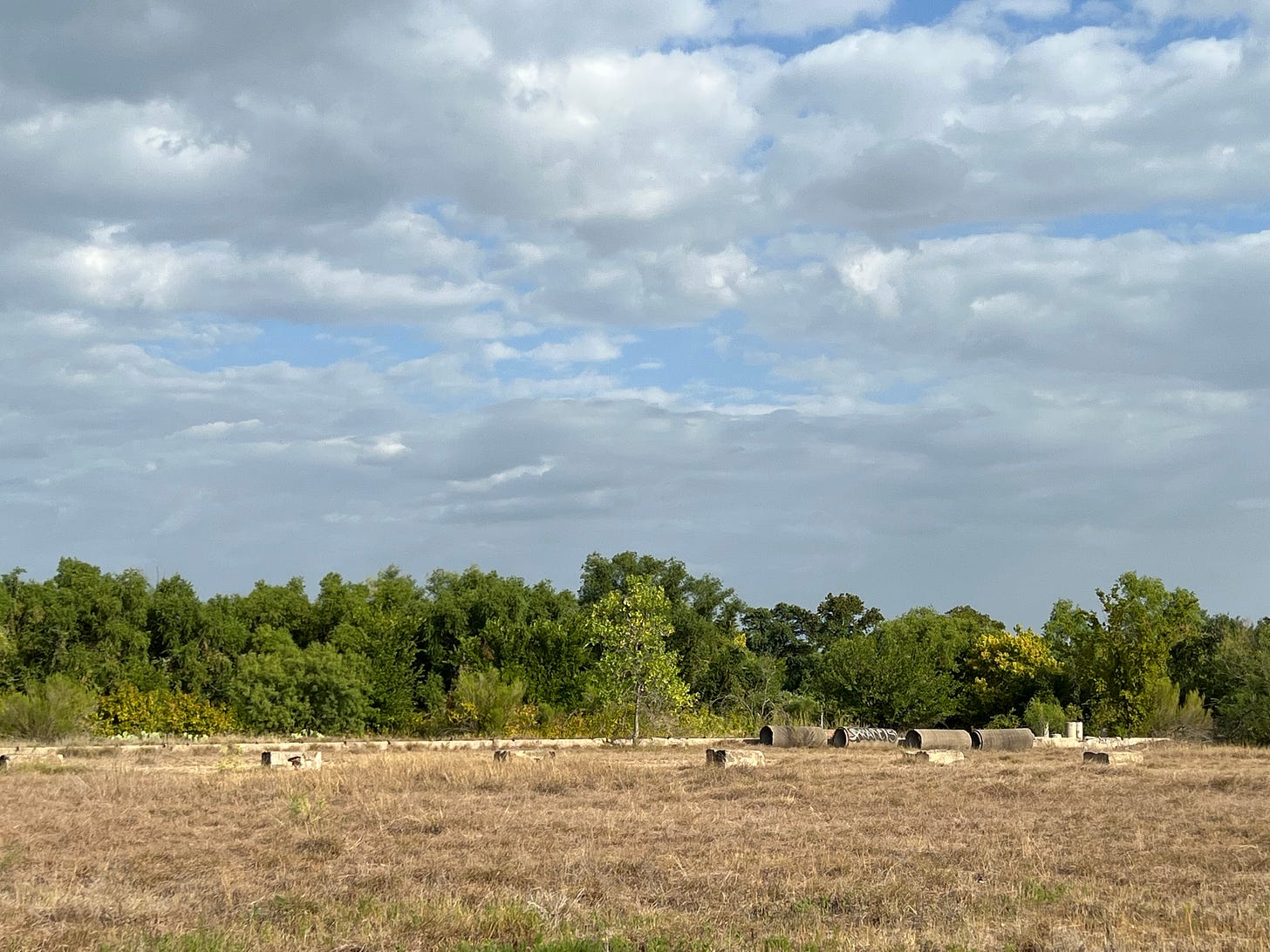

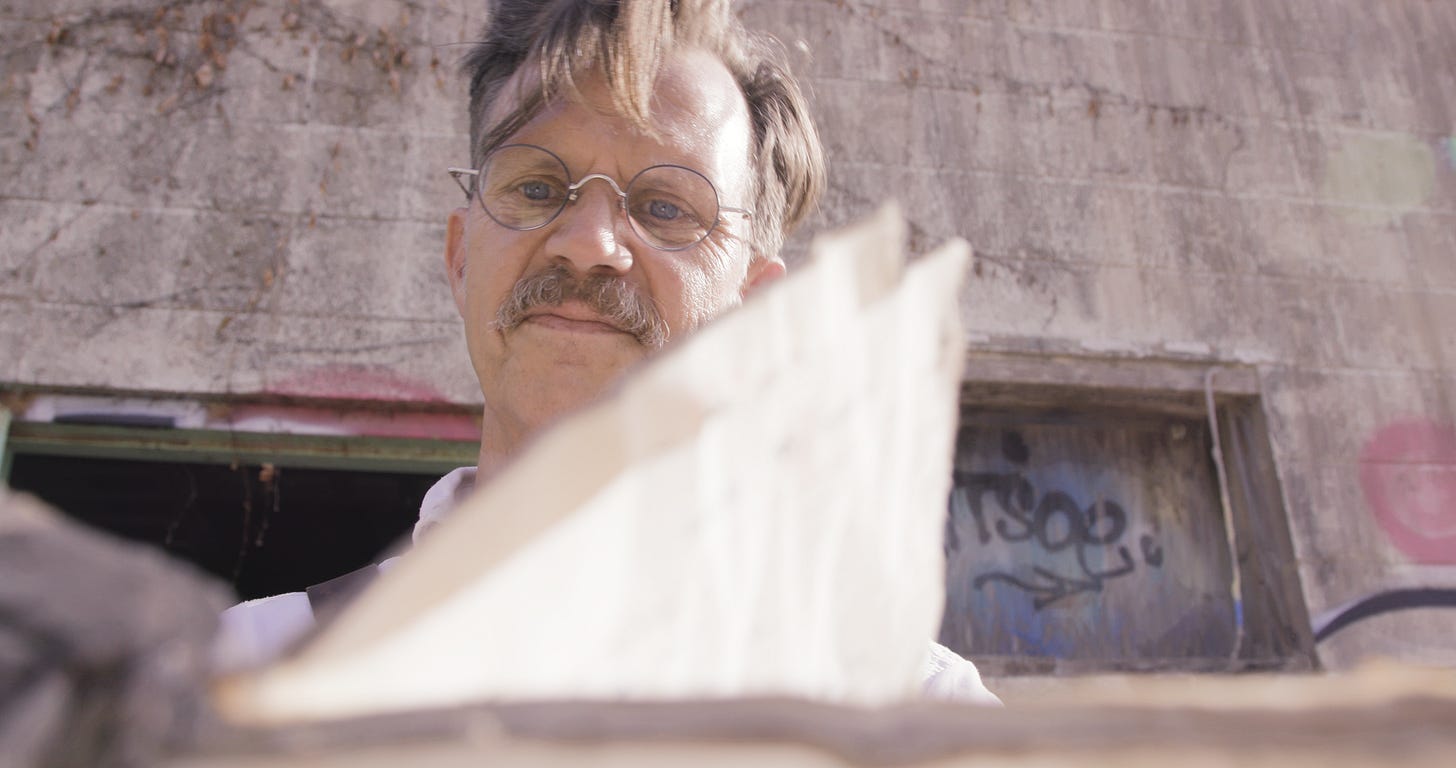
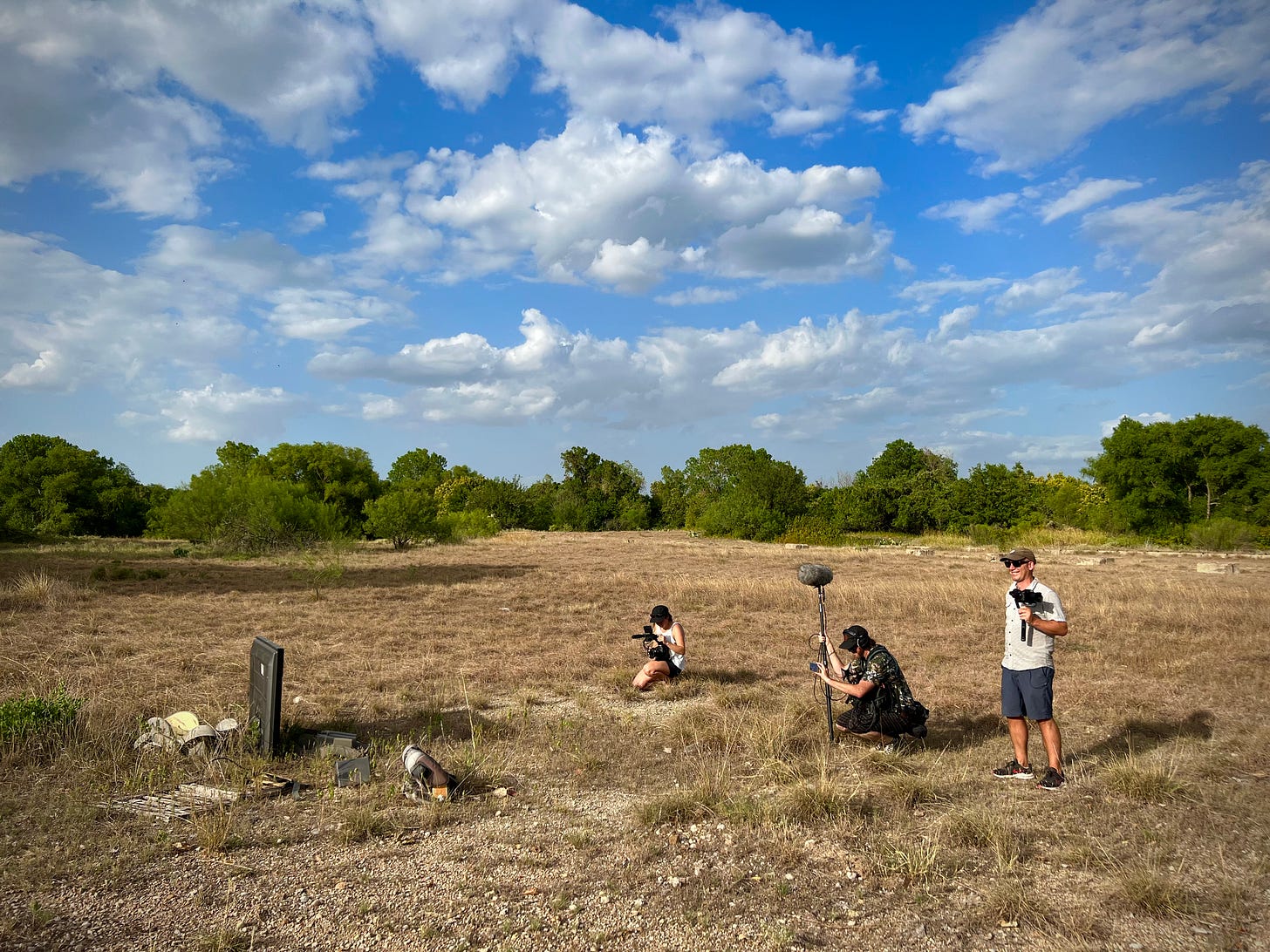

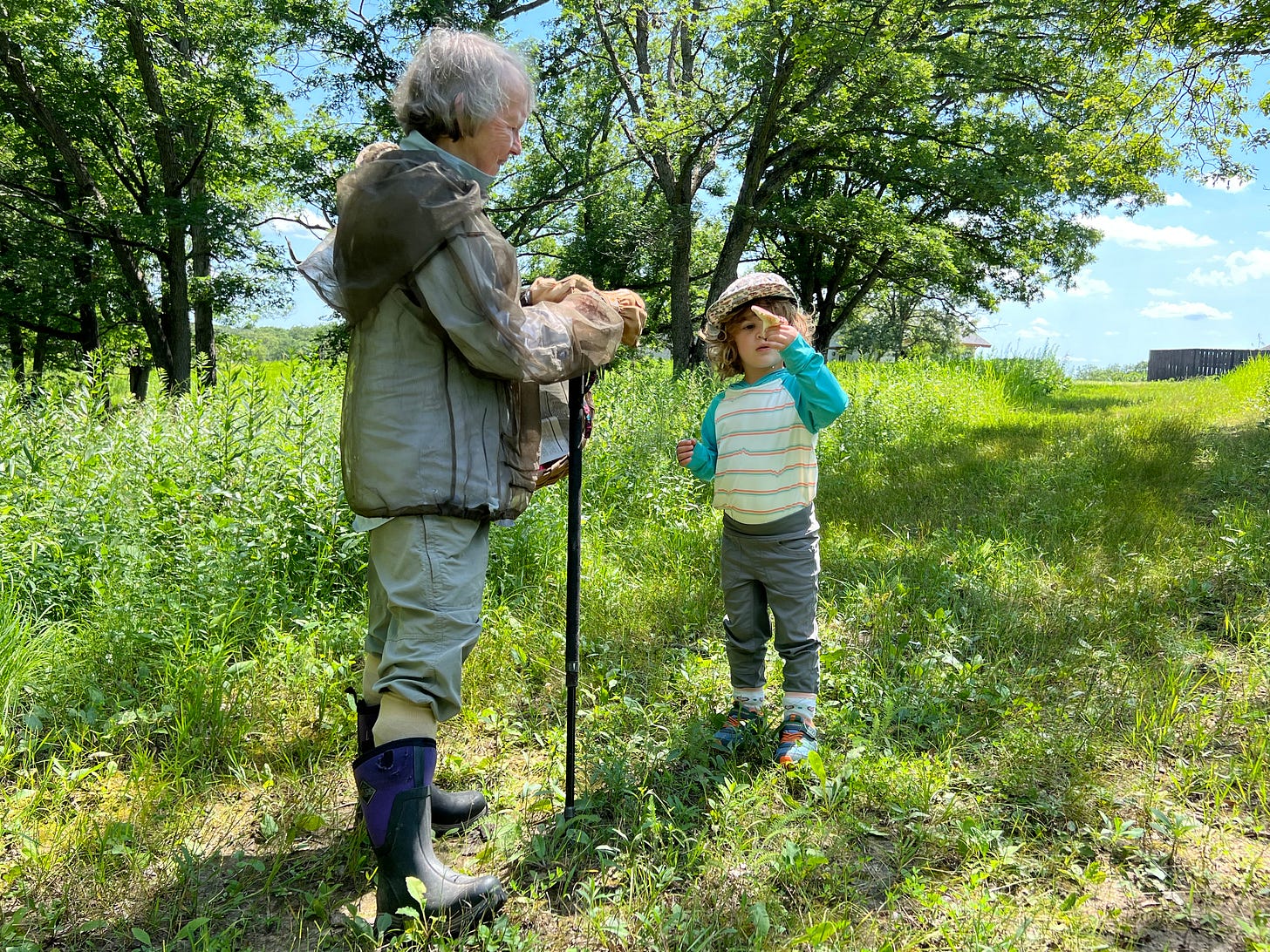
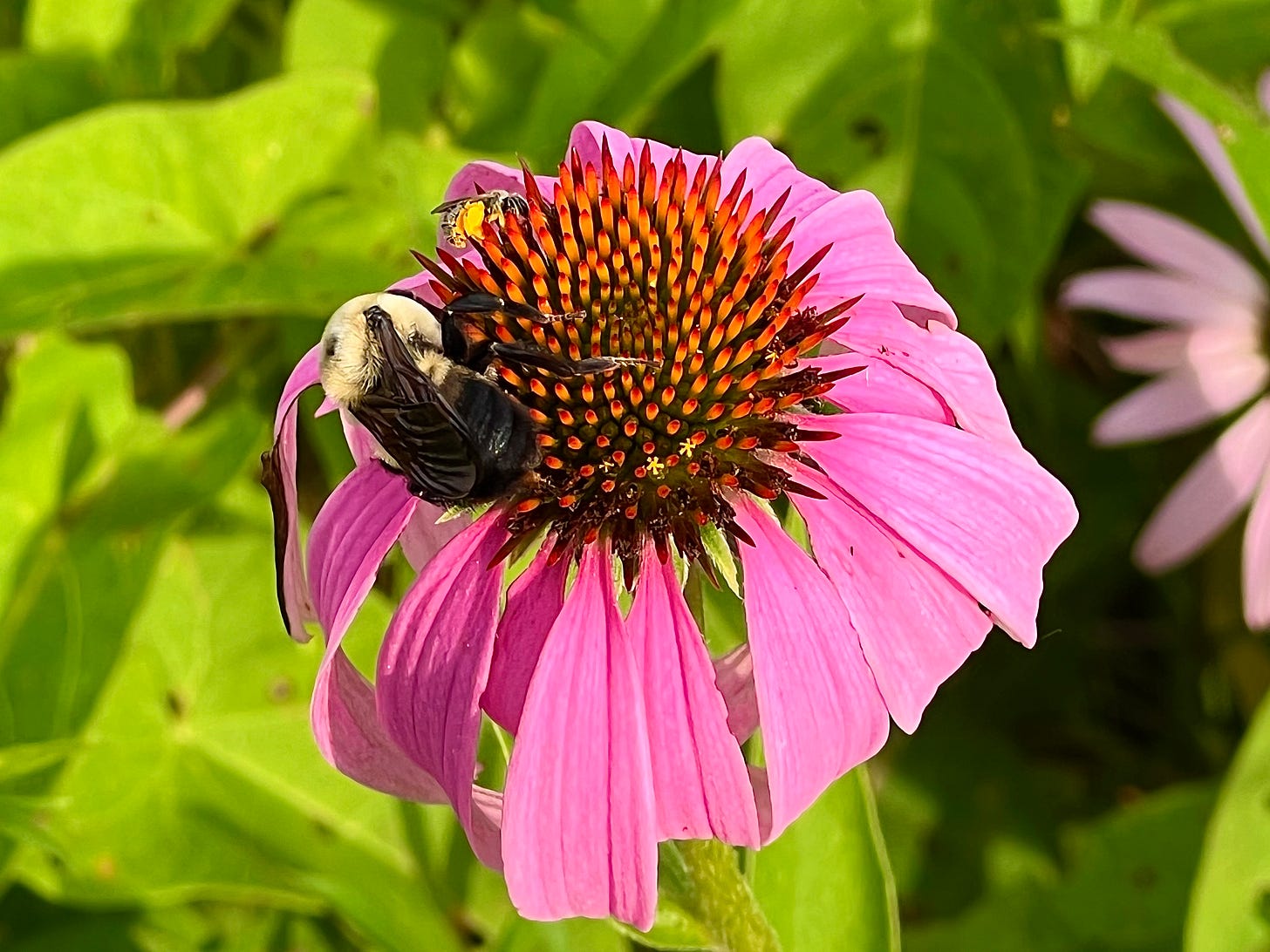
Texas is burning. Flee northward.
Another wonderful read by a gifted writer. Thanks